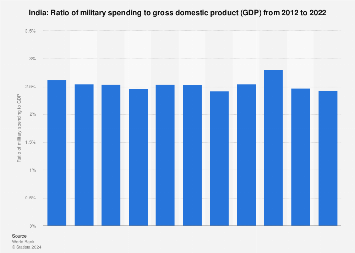We are in a similar position but people dont want to accep
Problem is, India really doesn't have many cards to play, and this anti-Chinese set-up is a waste of Indian time, money, and resources.
Currently, the nominal GDP ratio is 5.80. This has grown from the old 5 ratio, and will remain roughly stagnant over time, perhaps inching toward India's favor, but probably not below 5 in an appreciable span of time. When it comes to India trying to match Chinese military spending, the Chinese can just spend more money; I've calculated that the cost of China trying to destroy all of India's border bases (including airforce bases, so on) would be around 200 billion, which is equivalent to a year of China's current military budget.
When you consider the new Cold War that's brewing, between China and the United States, India faces no threat from the United States, due to extreme distance and the lack of US interests in its immediate vicinity (Pakistan is on China's side, so Pakistan will receive less US support as time goes on), while India has active border disputes with China.
India CAN choose to get on the United States' side, hoping that it's joining the winning side, but this feels like traditionally bad Indian strategy again (see: Prithiviraj, joining the losing Soviet side during the Cold War). In dealing with the China threat, it can either oppose it, go neutral, or join it. If it opposes it, by joining the US side and eventually importing F-35s, it means that India ends up spending money (which is the entire Chinese strategic goal) that can't hope to ever match Chinese spending. If it goes neutral, hiding behind its nuclear weapons (and India should focus on its nuclear deterrence capability instead of its conventional capability), it saves a lot of money. If it joins China (and it won't, due to competing nationalist visions), it can further save on nukes, but as I've said before, India is unlikely to do so.
===
As mentioned elsewhere, the likely Chinese strategic goal in "messing" with India is PRECISELY to get India to spend more money on armaments. While India has a very good debt profile right now (very low federal debt, reasonably high state debt, low private and corporate debt), the increase in spending will affect India's capability to make infrastructure (both soft and hard) investments. The more India buys armaments to offset China, the less India spends on what matters.
And that's the real reason India can't match China; China might have a two-front problem if India joins the fray on China containment, but China is starting from a 5-6x GDP ratio. India, potentially, can develop its economy to match China on a 1:1 ratio or better (larger population means higher potential economy), but unless it makes the hard infrastructure (roads, rails, irrigation) investments and soft infrastructure investments (education for the masses, reform of caste inequity), it can't achieve its potential. And the more China distracts India, the less India will focus on achieving its strategic potential.
So the entire Ladakh thing is a trap, and India has 100% fallen into it. The Chinese are not the Japanese, who originally were obsessed with war, but rather strategists and merchants. They're focused not on taking serious Indian territory (i.e, UP, Bihar), for which the insurgency would be dreadful to combat, but to convince Indians to overspend on military, when the Chinese already have a program of military modernization and are committed to offsetting the United States.



 Show me your calculations, Einstien!
Show me your calculations, Einstien!

